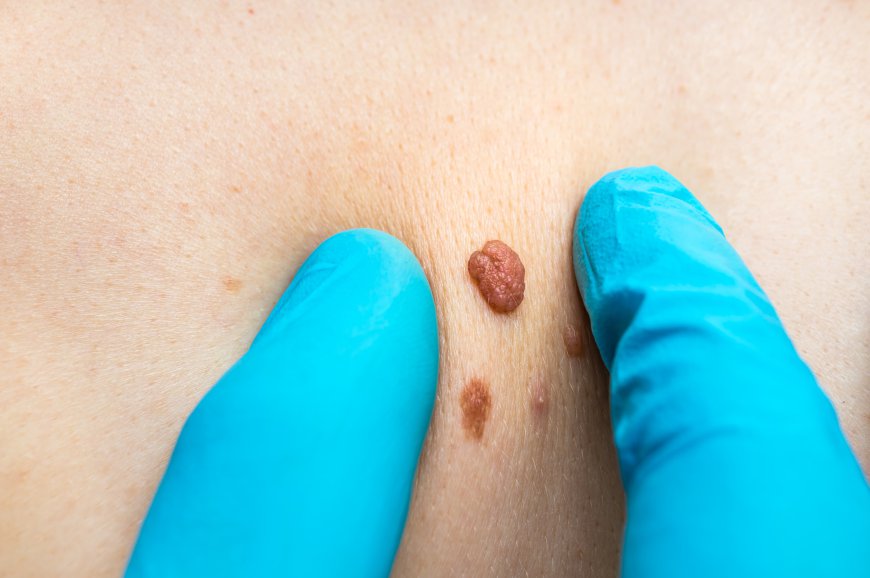Skin Tag Removal: Best Practices for Healthy Skin

Skin tags are small, benign growths that often appear on the skin's surface, commonly found in areas where skin rubs against skin or clothing. While they are generally harmless, many individuals seek skin tag removal for cosmetic reasons or discomfort. In Dubai, where the climate can lead to increased skin irritation and friction, understanding the best practices for skin tag removal and maintaining healthy skin is essential. This article will explore effective methods for Skin Tag Removal in Dubai and provide tips for keeping your skin healthy and radiant.
Understanding Skin Tags
Skin tags, or acrochordons, are composed of collagen fibers, blood vessels, and skin cells. They can vary in size, shape, and color, often appearing as small, soft bumps that hang off the skin. Skin tags are more prevalent among individuals with diabetes, those who are overweight, or those with a family history of skin tags. Additionally, they are commonly found in areas of friction, such as the neck, armpits, eyelids, and groin.
While skin tags are generally benign, they can become irritated if they snag on clothing or jewelry. For this reason, many people choose to have them removed. Fortunately, several effective methods exist for skin tag removal, each with its advantages and considerations.
Best Practices for Skin Tag Removal in Dubai
-
Consult a Dermatologist: Before undergoing any skin tag removal procedure, it's crucial to consult a qualified dermatologist. They can assess your skin condition, confirm the diagnosis, and recommend the best treatment option for your specific needs.
-
Cryotherapy: This popular method involves freezing the skin tag with liquid nitrogen, causing it to fall off over time. Cryotherapy is relatively quick and usually does not require anesthesia. However, some individuals may experience temporary redness or swelling in the treated area.
-
Electrosurgery: Electrosurgery uses a high-frequency electrical current to cut off the skin tag. This method is effective and allows for precise removal, minimizing damage to the surrounding skin. Local anesthesia is often used to ensure patient comfort during the procedure.
-
Ligation: This technique involves tying a surgical thread around the base of the skin tag to cut off its blood supply. The skin tag will eventually dry up and fall off. Ligation is a simple and effective method, but it may take longer for the skin tag to disappear compared to other methods.
-
Surgical Excision: For larger skin tags or those in sensitive areas, surgical excision may be recommended. This procedure involves cutting the skin tag off with a scalpel. It is typically performed under local anesthesia and may leave a small scar.
-
Home Remedies: Some individuals may attempt to remove skin tags at home using various remedies, such as apple cider vinegar or tea tree oil. However, these methods can be unpredictable and may lead to skin irritation or infection. It's essential to approach home remedies with caution and consult a healthcare professional before trying them.
-
Post-Removal Care: After a skin tag removal procedure, it's essential to follow your dermatologist's aftercare instructions. This may include keeping the area clean and dry, applying topical ointments, and avoiding sun exposure to promote healing and reduce the risk of scarring.
Maintaining Healthy Skin
In addition to skin tag removal, adopting a skincare routine that promotes overall skin health is vital. Here are some tips for maintaining healthy skin in Dubai's climate:
-
Stay Hydrated: Drinking plenty of water is crucial for keeping your skin hydrated and maintaining its elasticity. In Dubai's dry climate, consider using a humidifier indoors to add moisture to the air.
-
Moisturize Regularly: Use a good quality moisturizer that suits your skin type to keep your skin supple and prevent dryness. Look for products containing hyaluronic acid or glycerin for optimal hydration.
-
Sun Protection: Protect your skin from the harsh sun by using broad-spectrum sunscreen with an SPF of at least 30. Reapply every two hours, especially when spending time outdoors.
-
Gentle Cleansing: Use a gentle cleanser to remove dirt and impurities without stripping your skin of its natural oils. Avoid harsh scrubs or cleansers that can irritate the skin.
-
Balanced Diet: A balanced diet rich in fruits, vegetables, and healthy fats can contribute to glowing skin. Foods high in antioxidants, such as berries and leafy greens, can help protect your skin from damage.
-
Regular Check-Ups: Schedule regular dermatological check-ups to monitor your skin's health and address any concerns early on. This proactive approach can help identify skin issues before they become more serious.
Conclusion
Skin tag removal is a common procedure sought by many individuals for various reasons. Whether opting for professional treatments or considering home remedies, understanding the best practices for skin tag removal in Dubai can help ensure effective results while prioritizing skin health. By consulting with a dermatologist and adopting a comprehensive skincare routine, you can maintain healthy skin and enjoy a radiant complexion for years to come.
